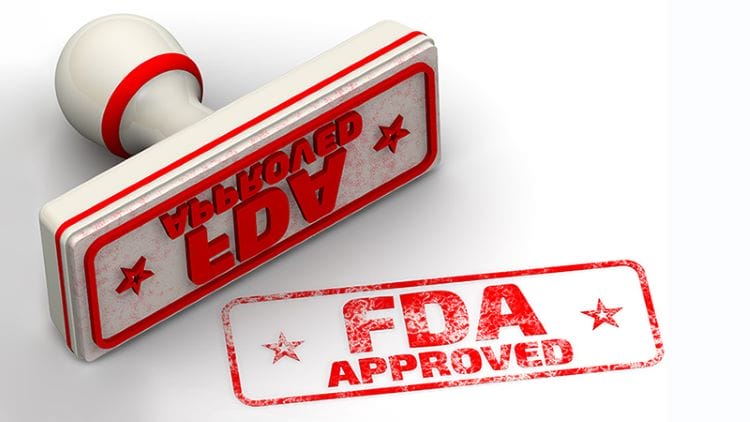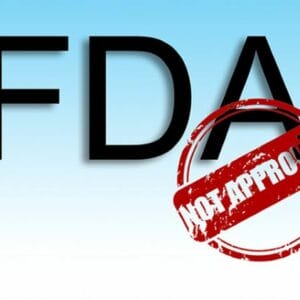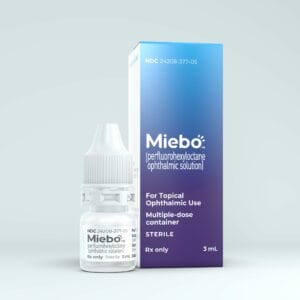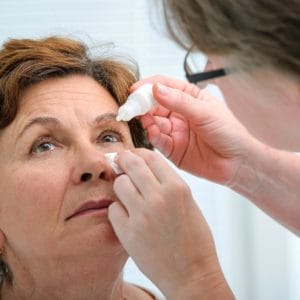January 3, 2024
Christmas came early for me this year. On December 6, 2023, Dr. Jack Schaeffer called me at work. I tell my friends and family to not call me at work because that indicates to me that something important has happened. Thankfully, this important call wasn’t bad news but exciting news for me being invited to be the pharmacology editor for Review of Presbyopia and the Aging Eye. Jack asked if I was familiar with the journal, which I was, as I had read Dr. Ben Gaddie’s articles. Both Jack and Ben have been colleagues and (hopefully) friends for many years and are two of our profession’s thought leaders and proponents of scope expansion.
I am honored to be asked and even more nervous to take on this role as no one wants to be in the position to have to follow the bar of excellence that is Ben. I am excited to be a part of this unique journal that encompasses all that is new and cutting edge in every facet of eye care and beyond for the 45+ patient. I look forward to working with Jack and the other contributors to the journal and invite suggestions for future articles. For my first article, I chose an area that might not sound very exciting at first glance, but I think it will make you more familiar with the extensive process that a device or drug undergoes to be available for physicians to prescribe for their patients.
Understanding the Food and Drug Administration’s approval process for all medical devices and drugs that are sold in the United States is fundamental when we talk about anything pharmacological. As clinicians who prescribe topical and oral medications to help treat and manage our patient’s ocular health problems, I am sure we have all thought about why brand name products are so expensive? Why do pharmaceutical companies charge so much for their products? Why are there products available in other countries but not here?
We are all aware that the Food and Drug Administration (FDA) plays the pivotal role in the approval and regulation of medical devices and drugs. The FDA is a federal agency within the Department of Health and Human Services whose primary job is to ensure product safety regulations. However, I am not sure many of us truly understand the process in which an ophthalmic drug or device undergoes to get approval for sale in the United States.
The eye is a unique structure for the development and approval of ophthalmic pharmaceuticals. Because the eye is a highly sophisticated and readily accessible sensory organ, unique delivery mechanisms and sustained release formulations (biodegradable nanocarriers, lipid nanocapsules, and nanogel) are becoming a reality in addition to traditional topical preparations.
Multiple Government Entities Involved
The FDA’s mission is to protect human safety in the development, approval, and post-market efficacy and outcomes monitoring of all approved products. This regulatory process is designed to benefit both patients and health care providers.1 There are multiple governmental departments/divisions that work cooperatively to safeguard safety, quality, and efficacy of ophthalmic products.2 These include:
- Center for Drug Evaluation and Research (CDER): evaluates prescription and over-the-counter drugs, including ophthalmic drugs.
- Center for Biologics Evaluation and Research (CBER): regulates biological products, including allergenics, blood products, and cellular therapies.
- Center for Devices and Radiological Health (CDRH): oversees medical devices, including ophthalmic devices such as intraocular lenses and surgical instruments.
- Center for Food Safety and Applied Nutrition (CFSAN): handles dietary supplements and food additives that may impact eye health.
- Office of Orphan Products Development (OOPD): fosters the development of products for rare diseases, which may include specific eye disorders.
- Office of Generic Drugs (OGD) part of CDER: plays a critical role in the evaluation and approval of generic ophthalmic products.
The Five Phases of Ophthalmic Drug Approval
Ophthalmic drug approval goes through five main “phases” from 0-4.1-5
Phase 0: proof of concept. This is the Pre-Investigational New Drug (Pre-IND) consultation regulatory process, in which the sponsor shows data regarding the comprehensive laboratory testing and evaluation of mechanism of action. Toxicological evaluation further scrutinizes potential adverse effects, ensuring the substance’s suitability for human trials. At this stage, the FDA (often with input from the National Eye Institute [NEI]) consults with the sponsors to discuss the product’s development plan and receives guidance on the necessary studies. This phase can take from six months to a year.
Phase 1: initial safety. This phase focuses on the product’s safety and tolerability. This involves a small group of participants (usually 20-80) and is primarily designed to evaluate the product’s safety, tolerability, and pharmacokinetics to help determine the appropriate dosing and administration methods for subsequent trial phases. The sponsor will submit an investigational new drug submission. Through this phase there are typically many meetings with the FDA on what the following clinical trials will include.
Phase 2: safety and initial efficacy. These are larger studies, enrolling several hundred participants, and aim at assessing the product’s effectiveness while continuing to monitor its safety. This phase is crucial for establishing the therapeutic dosage and evaluating the product’s benefit-risk profile.
Phase 3: efficacy and larger database. This involves a more extensive participant pool (often thousands) and is focused on confirming the product’s efficacy and monitoring its side effects in a diverse population. This phase is essential for generating robust evidence to support the product’s marketing approval. Once the clinical evaluation of the safety and efficacy of the novel therapeutic agent or device is completed, the sponsor submits a New Drug Application (NDA) with the compiled information to the FDA. Upon receiving the NDA, the FDA determines if there is sufficient data to proceed with a review. If the review proceeds, the FDA enlists expert opinions on the NDA. After receiving the advisory committee recommendations, the FDA makes its final decision either approving the product or issuing a Complete Response Letter (CRL) with concerns that need to be addressed.
Phase 4: post-marketing surveillance. This covers continued safety monitoring, rare side effects, and quality of life.
Requires Significant Time and Expense
The timeline for new drug approval can vary significantly depending on myriad factors. When the new drug involves innovative technologies such as gene therapy or sustained release, it can add additional complexities to the process. Much of the time is spent during the clinical trials gathering the clinical data necessary for approval. These studies often include thousands of patients over significant periods of time and are dependent on how well the studies are carried out with appropriate controls, etc. For a new ophthalmic drug, it can take upwards of eight years to take the drug from compound to market and can cost the sponsor anywhere from $800 million to $2 billion.5
Even this “simplified” overview should show that to get a new ophthalmic drug approved requires extensive clinical and safety data to be collected in multiple different phases with a not insignificant monetary expenditure by the sponsor. Even for drugs that have been approved in other countries, it is unlikely they underwent as extensive of a clinical review that is required if they were to seek approval to be sold in the U.S. The debate becomes whether that company is willing to undergo the time and expense to go through the approval process.
References
2 U.S. Food and Drug Administration. How Drugs Are Developed and Approved. Silver Spring, MD; 2022.
3 U.S. Food and Drug Administration. The Drug Development Process. Silver Spring, MD; 2018.
4 U.S. Food and Drug Administration. Premarket Approval (PMA). Silver Spring, MD; 2019.
5 United States Government Accountability Office. FDA Drug Approval, Application Review Times Largely Reflect Agency Goals. Washington DC; 2020.





